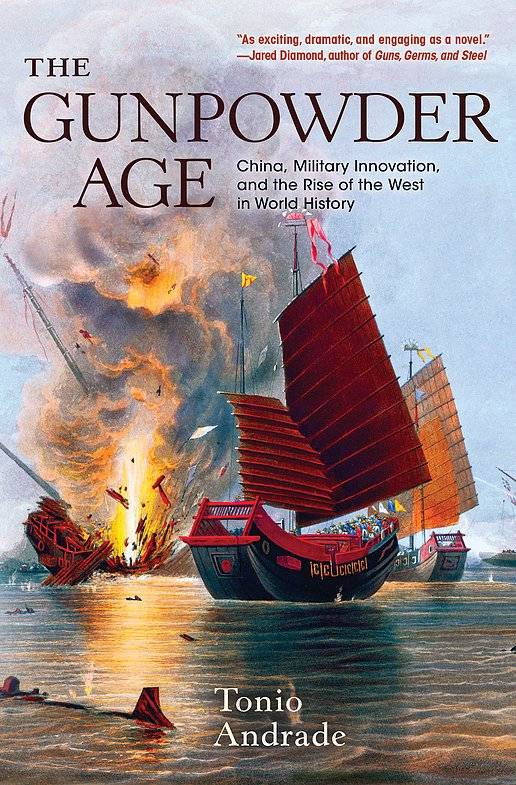On Monday, October 28th, the Colgate History Department welcomed special guest speaker Professor Tonio Andrade from Emory University to give a talk on his acclaimed book The Gunpowder Age: China, Military Innovation, and the Rise of the West in World History (Princeton, 2016). Professor Andrade, a global historian, spoke about Chinese military history in comparison to Western European military history, aiming to dispel the misconception and stereotypes about Chinese military and technological development within the Academy and popular discourse. With an audience filling Persson Hall Auditorium, Professor Andrade’s lecture was lucid, animating, erudite, and equally engaging.
Andrade started his lecture with a quote from Napoleon on the possibility of holding warfare with China by the European nations, which included France and Great Britain. As Napoleon considered that it is irrational and unprofitable to start a fight with China in the first place, he said “let China sleep… for when she wakes up, she will tremble the world.” It is from here that Andrade drew the key question regarding China’s military matters: when and how did China fall asleep and wake in the first place? And why? He then delved into a brief overview on the existing comparative history work of China and the West. He pinpointed that most of those works concentrate primarily on the comparison of economic growth and the system between China and the West. Andrade believes instead that Chinese military history, in comparison to the West, especially Europe, is equally fascinating and important for us to study.
With that established, Andrade then further delineated the chronology/periodization he established for his work. He compared the military history trajectories, mostly the use and development of gunpowder, of China and Europe, from 10th Century to the twentieth Century. He divided this long periodization into five stages: a. Early Gunpowder Age: 900-1400, in which China was leading in the use of gunpowder for military purposes; b. Neutral Divergence: 1400-ca. 1450. During this time, China and the Western Europeans were developing their use and style of gunpowder differently; c. Small Divergence: 1450-ca. 1525. At this time, the Western Europeans developed the classic cannons and also the Neuchatel guns that are fast to cool and better to aim. Those gun styles were copied by the Chinese in early 1500s; d. Age of Parity: 1525-1750. In this period, the Chinese elites and military officers indigenized Western-style guns, creating hybrid style of guns in China. The guns were heavily employed by both regions in their warfare. During this period, the warfare between China and the Western Europeans was won by China, hence “the age of parity” for both China and the West; lastly, e. Great Military Divergence: 1775-1900. Within this period, as the Great Qing experienced a relative peaceful period, Andrade stated that the military practices in China became a bit “out of practice,” without further input of development from the Imperial Court of Qing emperors. It is this period Andrade considered that China and the West parted their ways in military technology, which was demonstrated most explicitly from 1840 to 1842, the First Opium War between China and Great Britain.
Andrade lastly took a brief look at military patterns in China. He speculated that the dynastic transitions and the subsequent power consolidations in China were a key contingency factor that shaped the development of military technology. Looking at the recent statement made by Chinese President Xi Jinping and China’s developing military weapons and technology, he invited the audience to muse if China’s military rise can be a peaceful development as its official rhetoric claims.
Article by Zhelun Zhou ’20
